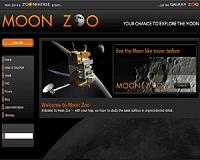 |
Greenbelt MD (SPX) May 17, 2010 Located on the western limb of the Moon, Einstein and Einstein A craters (16.3oN, 271.3oE ) are only visible to Earth-based observers during certain lunar lighting and orientation conditions. Einstein A is younger than Einstein, as indicated by the fact that it lies squarely in the middle of the floor of Einstein. When viewed in topographic data, these two craters reveal much about the relative age and shape of an impact crater. To understand further, let's first take a look at Einstein. Einstein is a fairly large crater that spans 198 km across. A crater's size alone however cannot reveal much about age. Einstein's relative age can be determined by examining the frequency and distribution of impact craters overprinted on its rim and floor. Younger craters have had fewer impacts, which enables them to retain their original morphology. Einstein A reveals most of its original structure, including a raised rim and ejecta blanket, and is therefore a relatively young crater as compared to Einstein, whose original structure has been somewhat degraded over time by smaller impacts. The Einstein craters were named after famed physicist, philosopher, and scientist Albert Einstein (1879-1955).
Share This Article With Planet Earth
Related Links LOLA instrument Web site Mars News and Information at MarsDaily.com Lunar Dreams and more
 NASA Invites Public To Take Virtual Walk On Moon
NASA Invites Public To Take Virtual Walk On MoonMoffett Field CA (SPX) May 17, 2010 More than 37 years after humans last walked on the moon, planetary scientists are inviting members of the public to return to the lunar surface as "virtual astronauts" to help answer important scientific questions. No spacesuit or rocket ship is required-all visitors need to do is go to http://www.moonzoo.org and be among the first to see the lunar surface in unprecedented detail. New high ... read more |
|
| The content herein, unless otherwise known to be public domain, are Copyright 1995-2010 - SpaceDaily. AFP and UPI Wire Stories are copyright Agence France-Presse and United Press International. ESA Portal Reports are copyright European Space Agency. All NASA sourced material is public domain. Additional copyrights may apply in whole or part to other bona fide parties. Advertising does not imply endorsement,agreement or approval of any opinions, statements or information provided by SpaceDaily on any Web page published or hosted by SpaceDaily. Privacy Statement |